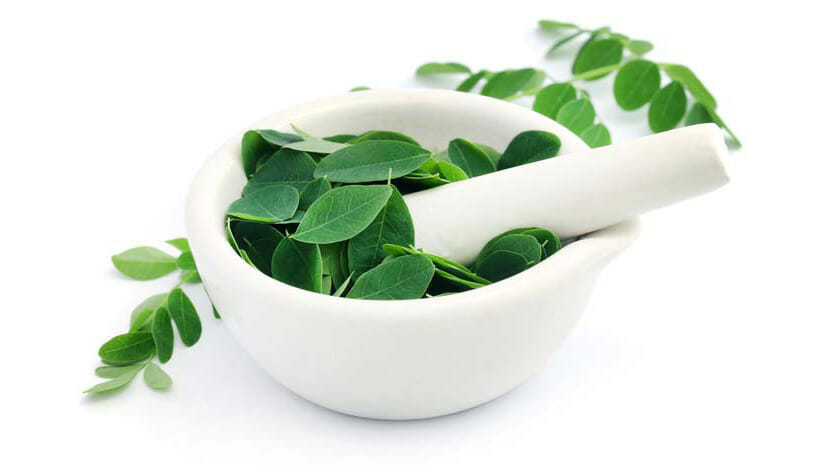 Moringa: A Subtropical Tree that Strengthens Personal and Planetary Health
Moringa: A Subtropical Tree that Strengthens Personal and Planetary Health
If we were to design the perfect superfood plant, something that is drought-resistant, can replenish the soil, nearly all of the parts of the plants are edible, is full of a wide array of vitamins and minerals, and is even a rich source of plant-based protein, we just might be describing the semi-tropical tree Moringa.
Red Carpet Superfood
These days, Moringa is receiving red carpet exposure and a growing spotlight in health and scientific circles because of its reported medical and nutritional benefits, as well as status as one of the worlds “Superfoods.” From the scientific literature to features in fashion mags, people are asking if Moringa is the next kale. Whether it is the kale for the new millennium or just what we need, this bitter leaf is being used in protein powders, teas, drinks, bars, and supplements from a variety of companies.
Moringa oleifera belongs to the Moringaceae family and is commonly known as the drumstick, horseradish, and Ben oil tree. It is a fast-growing tree with thick, whitish bark and droopy, fragile branches with long, green, oval-shaped leaflets. Although native to India, it is cultivated extensively in tropical and subtropical areas in Asia, Africa, and South America, and has been used throughout history by the Romans, Greeks, and Egyptians. While Moringa is typically not cultivated in North America, it can be found in Hawaii.
Due to its popularity, Moringa is being grown in warmer areas of the US, including Southern California. There are at least a dozen different varieties of the Moringa tree, but the Moringa oleifera is by far the most widely cultivated. It is sometimes referred to as the “miracle tree” because it is capable of growing in depleted or dry soils where many other types of plants or trees cannot survive. As it progresses through its lifecycle, it helps replenish diminished minerals and nutrients, restores fertility to the soil, and even filters water.
All parts of the Moringa are used
- Roots, stems, and leaves are the most potent sources of antioxidants, phenolic compounds, amino acids, and macronutrients.
- Seeds and flowers are high in protein and fatty acids and are used to supplement proteins in diets.
- Seeds and flowers can be steamed, roasted, or boiled and can be used for water purification systems.
- Pods (often called “drumsticks”) look similar to a green bean and are used extensively in cooking.
- The pressed oil “Ben oil” is used in skin care products, medications, and supplements.
Try Moringa and Kale Hummus
Are you looking for a creative and delicious recipe that incorporates Moringa powder? Try this Kale and Moringa Hummus for a protein- and nutrient-rich side dish or appetizer.
Nutritional Content
Moringa has an unusual flavor that is similar to asparagus and horseradish and is used extensively in Indian cooking and medicine. It is a powerhouse of nutrition that includes the amino acids isoleucine, leucine, lysine, methionine, phenylalanine, threonine, tryptophan, and valine, as well as vitamins A, B, B1, B2, B3, B5, B6, B12, C, D, E, K, and folate. Additionally, Moringa has high levels of calcium, chromium, copper, fluorine, iron, manganese, magnesium, molybdenum, phosphorus, potassium, sodium, selenium, sulphur, and zinc.
Ayurvedic Energetics
Ayurveda analyzes foods, spices, herbs, and beverages by their energetics. Moringa contains the pungent and bitter tastes, is heating in nature, and has a pungent aftertaste-effect on the body. Furthermore, it is considered to be light, dry, piercing and firm, balances the Vata and Kapha doshas and can possibly increase Pitta dosha. The precise medical benefits are continually being studied and published, but Ayurvedic medicine has been using Moringa since 2,000 BC.
Moringa’s biomedical actions include its effects as a digestive, carminative, laxative, adaptogen, immune modulator, alterative, bronchodilator, cardiotonic, emollient, analgesic, and anthelmintic. This plant also acts as an anti-allergen, anti-arthritic, anti-cholesterolaemic, anti-inflammatory, anti-oxidant, anti-tumor, anti-fungal and anti-bacterial.
How Much Moringa to Use for Medicine
The maximum recommended dosage of Moringa powder for a 150 pound person would be approximately 18 grams per day (8 teaspoons). It is recommended to start by taking 1-2 teaspoon per day for 3-5 days, monitor its effects, and then slowly increase the dosage over a couple of weeks if required.
When Not to Take Moringa
Some of the contraindications of using Moringa include gastritis or sensitive stomach disorders, and during pregnancy, menstruation, and while lactating. Moringa is high in potassium, calcium, and iron and should be avoided if someone has kidney disease, is on dialysis, or is on a restricted diet prescribed by a doctor.
Finding Moringa
Until recently it was not easy to find fresh Moringa locally in Los Angeles, but it is becoming more common. In addition, a number of companies are making Moringa powder available, and are developing products that contain Moringa for its potent nutritional value. Click here to read more about Moringa Sources.
Jeff Perlman is a Clinical Ayurvedic & Pancha Karma Specialist, Certified Iyengar Yoga Instructor, Certified Massage and Marma Therapist, a professional member of the National Ayurvedic Medical Association and a Cordon Bleu Chef. He is available for private consultations. He leads annual trips to India. You can contact him at jeff@tsayurveda.com or visit his website: threeseasonsayurveda.com
